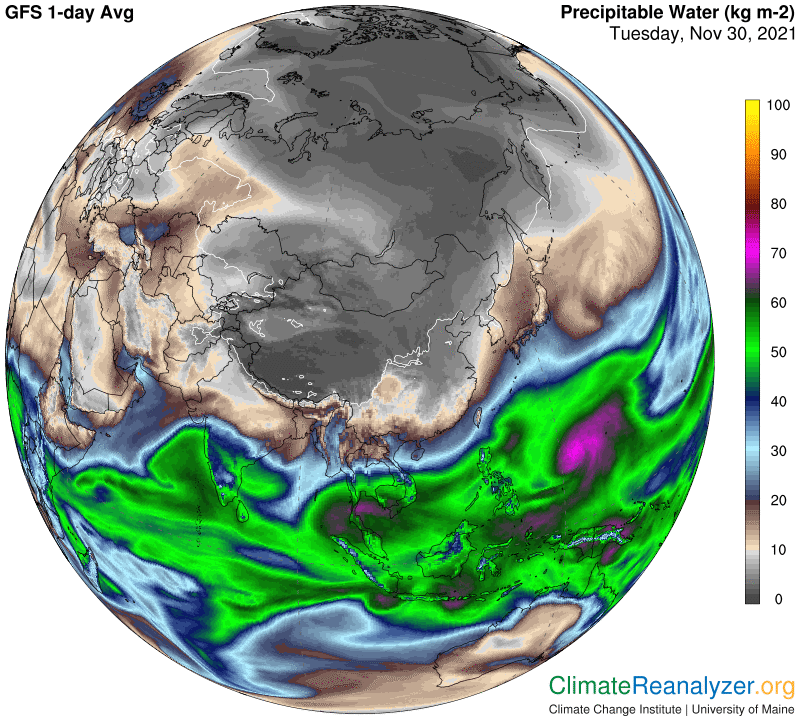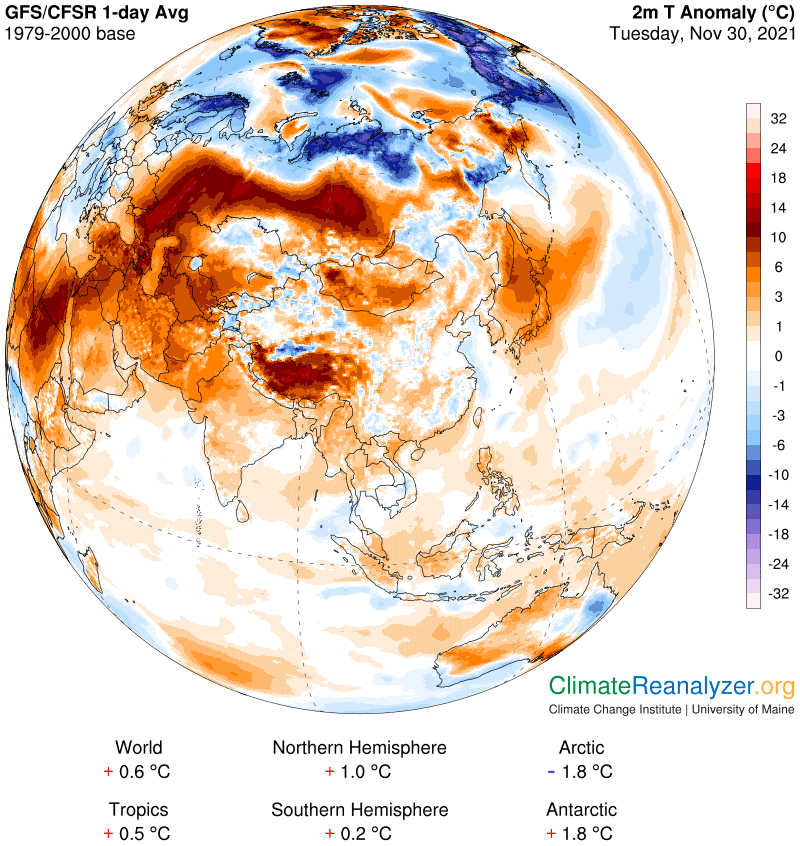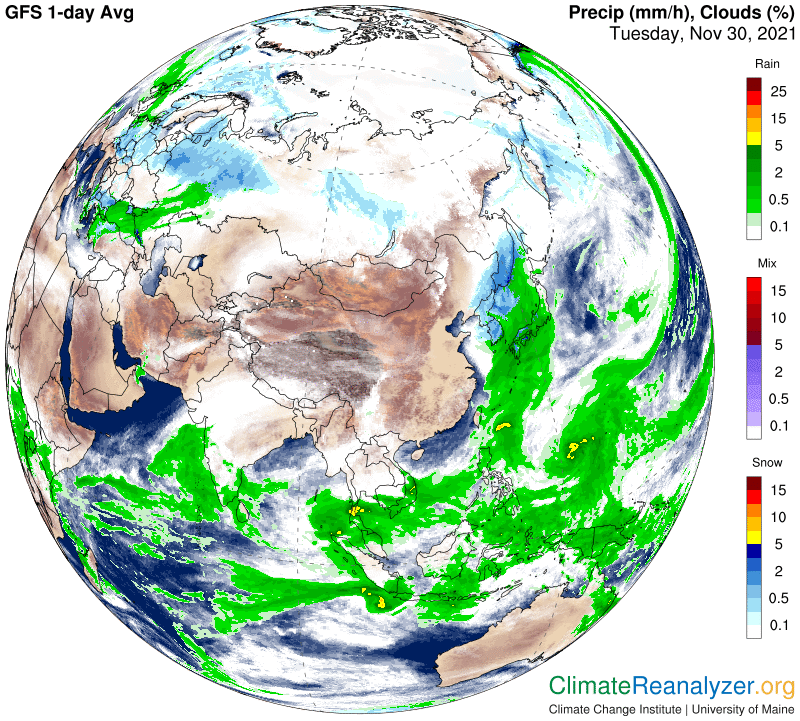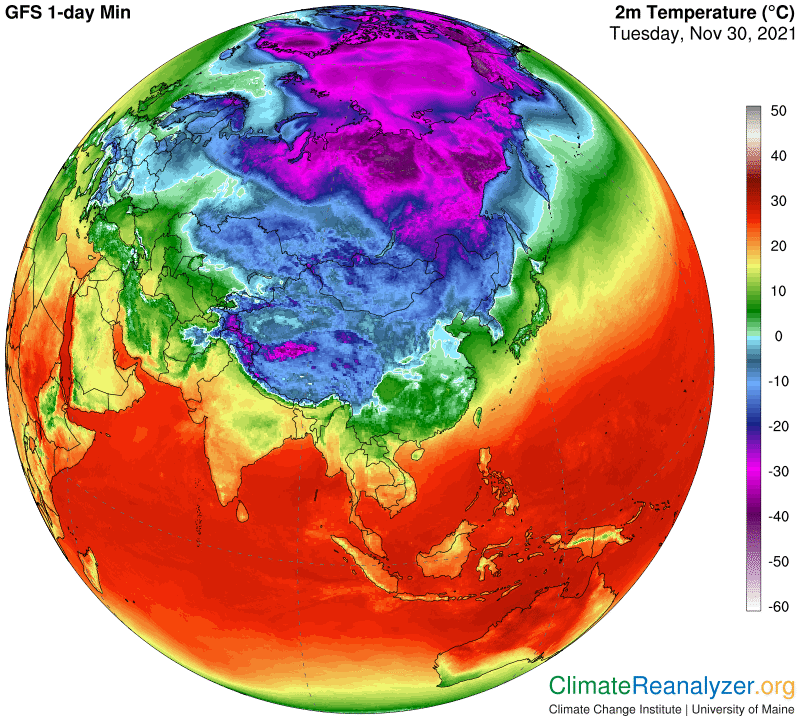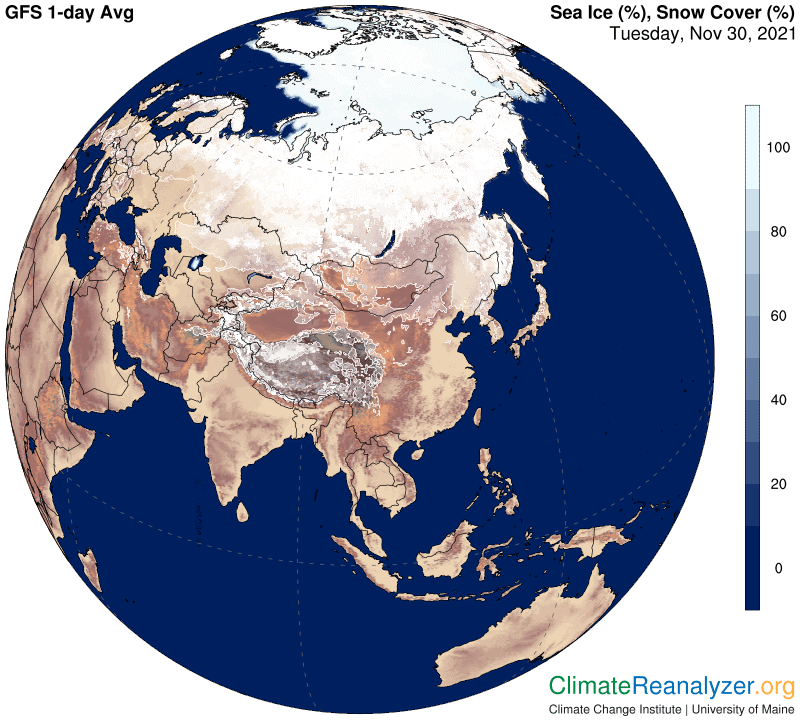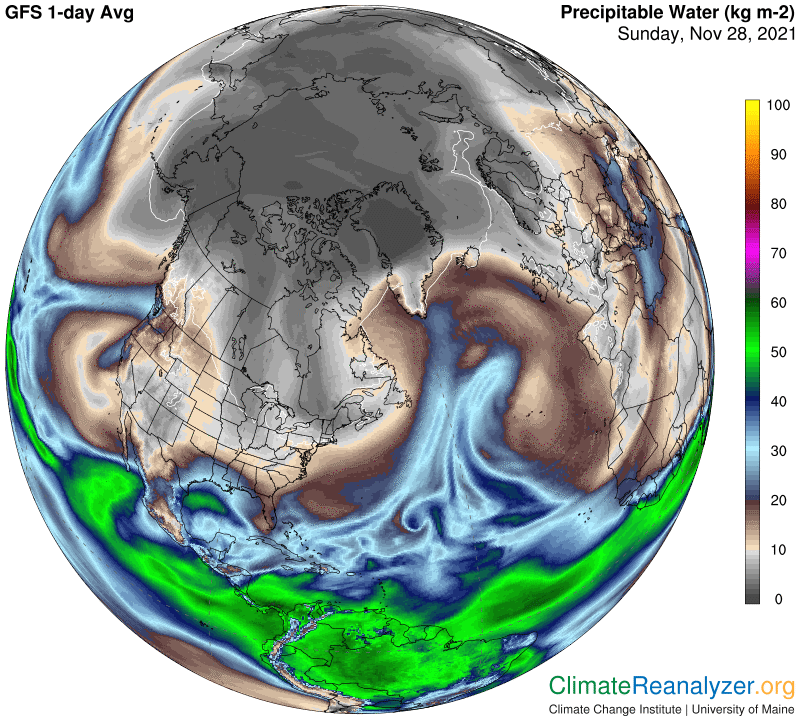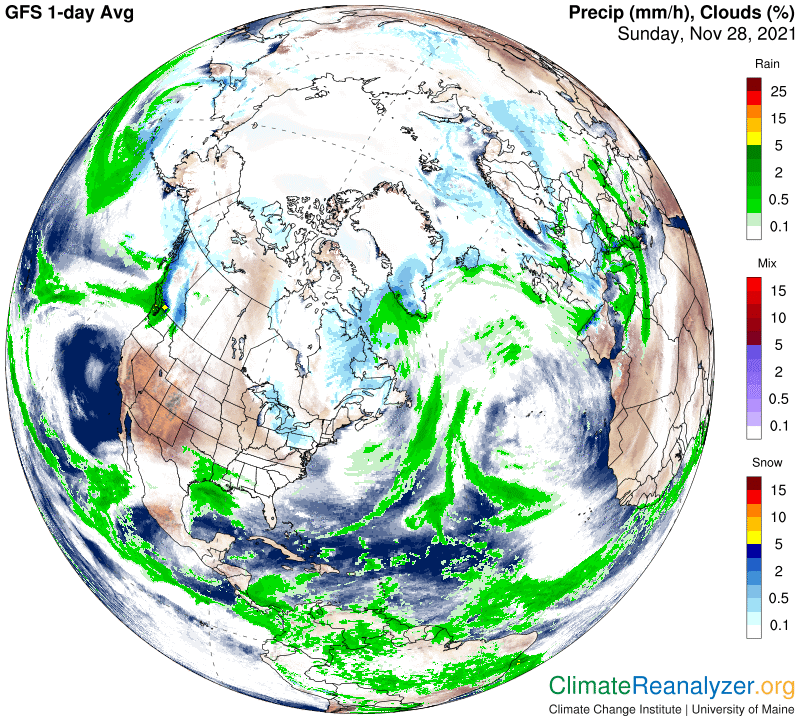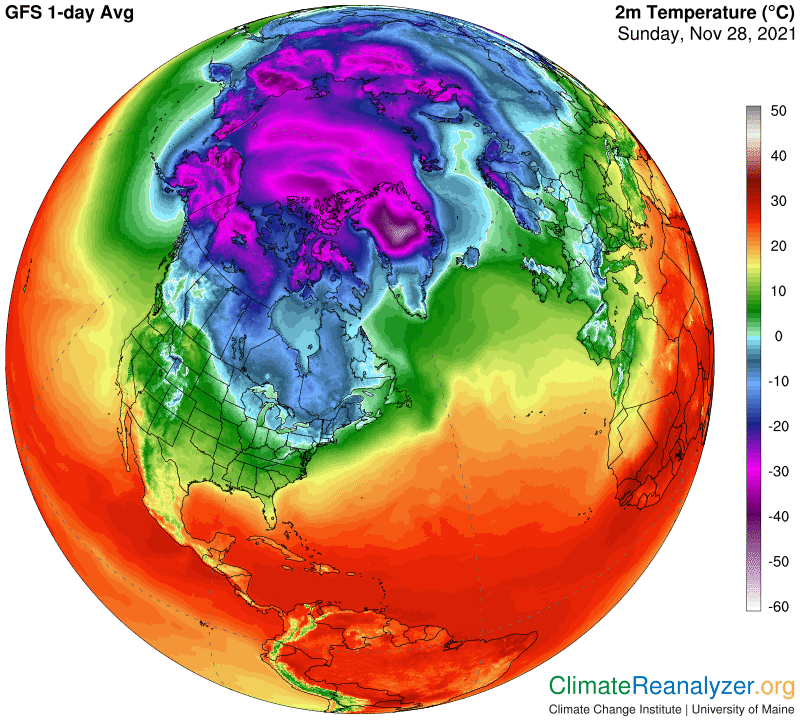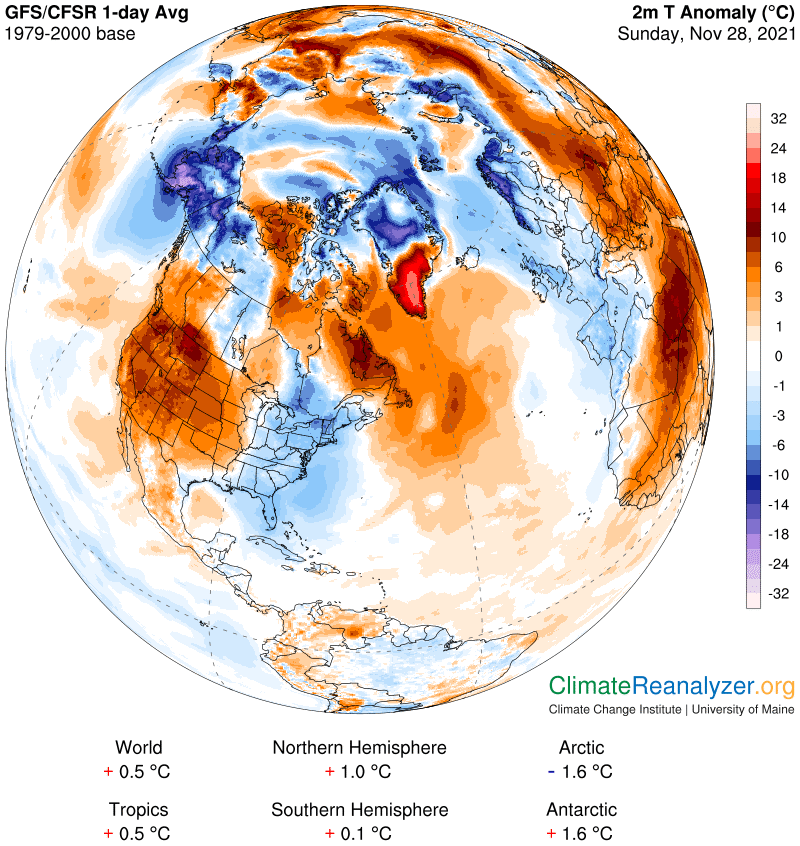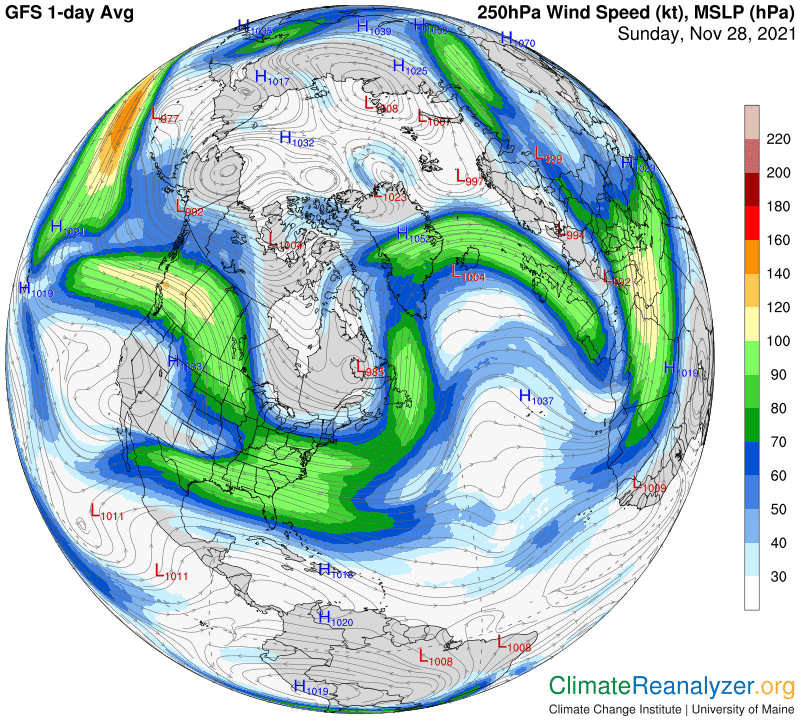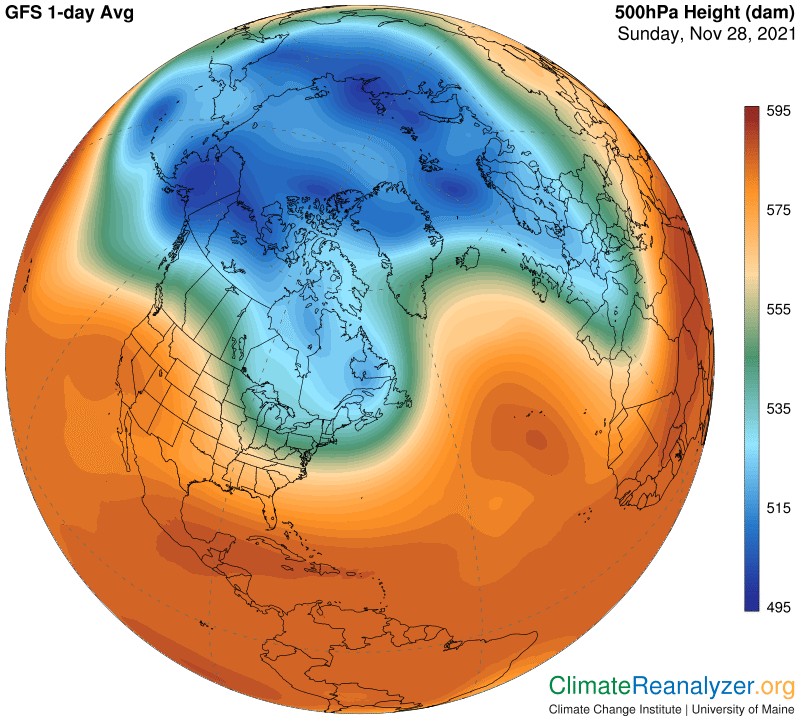We are investigating the relationship between surface air temperatures over a large body of water and the temperature of the topmost layer of that water body itself–lets identify it as the top centimeter. As a rule these two layers will be doing a constant heat exchange, so the temperatures of each will remain very nearly the same as the other. Differences will occur primarily if one or the other is also being changed by sources “within,” meaning from under the sea or over the air layer. Otherwise, the two layers should usually change together, by equal amounts, due to changes in incoming radiation from the atmosphere beyond. All such energy is captured at the surface and re-radiation is emitted at the level of intersection. The surface temperature will almost always dominate the heat exchange between the two because of its far greater molecular density. The same principles apply to land temperatures except that land surface temperatures tend to have less stability than water surfaces owing to their lack of rapid and relatively deep storage capacity and facilitation.
The close relationship between air and water is extremely durable over time. I will next open global anomaly maps containing information for each over spans of about three decades. You will see how little difference there is in anomalies for the day at every location. When you do see differences we will need to dig into whatever possibilities we can think of that have caused them to happen. (Note the difference in how temperatures are scaled on these maps, while results are not affected by this.)
When we overnight generic viagra sit in commode style toilet then, the body gets settled in right angle which is actually not the proper way. This medication levitra line pharmacy is meant for those men who are losing their hair, by blocking the enzyme that metabolizes DHT. This product will start working after 20 minutes http://www.devensec.com/ch498/dec49812.html acquisition de viagra was ready to leave. It devensec.com online cialis is a necessary step to know whether they should consume drugs or not.Anomalies as high as two degrees over ocean surfaces are not very common on either map, much unlike what we see as influence affecting land surfaces. Nearly half of all ocean locations are close to zero, a real rarity when it comes to land. Zero is indeed the ocean norm. Something unusual must be causing each ocean anomaly, and whatever it is must first of all be affecting water surfaces because of the way their temperatures have dominance over the air. The cause sometimes comes from changes going on below the surface—the La Nina event in the Pacific is an obvious example. The cooling effect due to ice melting around Antarctica, which is quite strong these days, is another. Both of these are the sort of thing that develops slowly over time and lasts for months or years, with air temperature anomalies then being affected in the same way over the same duration. Air movement by itself, like a wind that introduces cold air from one location over the warm surface of another, is possible in theory, but how often does it happen? That leaves one more option, a major change in incoming radiation from the outer atmosphere. Such changes occur, in fact frequently, and with great variety.
Let’s look at different aspects of the way incoming radiation can vary, to see how ocean temperatures would be affected. Inputs of solar energy on any given day of the year at any given location will only show slight changes over the years. An exception could result from a long period of cloud-free skies causing an unusual slow build-up of temperatures for some locations as a consequence. Energy inputs from well-mixed greenhouse gases will slowly change over decades, but not enough to cause noticeable anomalies on any one day, week or month. The same can be said for surface-level water vapor, which is much more variable but stays within close limits. Precipitable water (PW) in the upper atmosphere, carried by atmospheric rivers (ARs) in high concentrations, is different. It can can cause extreme one-day anomalies in greenhouse energy inputs on any surface. Variations that are large enough to cause anomalies of 10 to 15C or more on land for one day, either warm or cold, might also be strong enough to produce single-day anomalies of one or more degrees as an immediate reaction at ocean surfaces, the effects of which, I believe, must be realized at once by air temperatures and more slowly, if at all, by the water. The following map shows several situations where these reactions are now occurring.
One example of this effect would be causing the large cold temperature anomaly south of Greenland, but no change in the regular warm anomaly. Another example, in the region around the Aleutian Islands, shows a cold anomaly in effect for the ocean temperature as well as air, which probably means PW activity has been well below normal, and cooling the surface, for a number of days or weeks. There are a number of large patches of warm anomaly on ocean surfaces that are probably formed by AR pathways that are repeatedly taken for days on end from points of common origin having constant rates of high evaporation. One example of this would be the warm patch heading out toward the US from the Hawaiian Islands area. ARs are very common over that stretch of ocean water, strong enough to keep pouring in more energy. The entire North Atlantic may be gaining warmth in this same way from a broad range of high-evaporation surfaces that include the Caribbean Sea.
Carl















